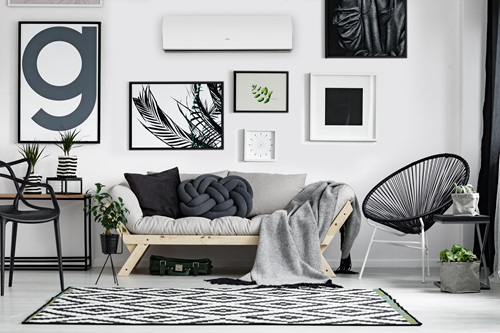Five Ways You Can Save Energy When Using A Ducted Heat Pump / Air Conditioner

New Zealand’s summer season is perfect for beach trips, relaxing in the shade and having a cool drink after a long day. It’s also a time when many New Zealanders turn to their air conditioner to keep them cool. If this is how you keep cool, it’s important to know some handy air conditioning tips to save energy. These tips outline what you can do to ensure your system is being used efficiently, and how to use your system’s built-in energy management features.
Close doors and windows
Leaving windows and doors open is an easy way for air to escape. Keep all exterior doors and windows closed to trap the cool air inside. You can also help maintain a consistent indoor temperature by installing curtains with lining, or blinds, to reduce the impact of the sun’s heat during the day. Temperature stability inside means your air conditioner is working as efficiently as possible. With a ducted air conditioning system you can also use zone control to manage the areas of the home you want to cool at different times of the day or night, and close rooms off when they’re not being used.
Set it right
It can be tempting to set the temperature on your air conditioner really low in summer so you can beat the heat. Setting the temperature too low can put pressure on the unit to work harder for longer and doesn’t necessarily cool a space any faster. We recommend 23 degrees Celsius to create a cool, comfortable environment without excessive energy consumption.
Use built-in programs and features
Utilise your air conditioner’s full capabilities by setting timers or programming scenarios to run at a chosen time. Using these inbuilt settings allows you to plan when to start cooling the indoor air in advance of getting home or waking up. With the system using low fan speeds and less energy to slowly cool the home it is operating more efficiently.
Keep it clean
Indoor grilles and vents, and outdoor units can gather dust and debris over time which can restrict airflow. This can cause the system to work harder and use more energy. Have a cleaning routine at the beginning of summer and winter, clean the grilles and filters, and keep the outdoor unit free from debris and obstructions.
Regular servicing
To keep the system running at its best you should have the air conditioner professionally serviced by a licensed heat pump / air conditioning technician every one to two years, depending on usage. This will help keep your system in good working order for long-term efficient and effective use.
Utilise shade
Your air conditioning system is a powerful unit, but it shouldn’t be left alone to do all the heavy lifting. Maximise the potential of your energy efficient air conditioner by closing blinds, curtains and shades to block sunlight and further insulate your room from extra heat.
Use zone control
For efficient operation, a ducted air conditioning system can be set-up in zones - this means each zone can be switched on or off as required. This feature allows users to easily manage the air flow to different areas of the home to maximise comfort and minimise energy wastage. For example, the air conditioning can be on in the living areas during the day, and in the bedrooms during the night. This flexibility makes the system efficient and effective.
Use Smart Controls
Using the Fujitsu General anywAiR technology ducted controller maximises the efficiency of your Fujitsu ducted air conditioning system by allowing Wi-Fi control of your ducted air conditioner via a wall mounted touch pad. Remote access is available using the anywAiR app, giving control of you ducted system anytime, anywhere with selected smart phone and tablet devices. Further the anywAiR technology ducted controller features a SleepEconomiser, which automatically switches your unit from COOL to FAN mode between the hours of 10pm and 6am, to help you save energy while still providing comfort. The AutoFan functionality automatically adjusts the fan speed based on the number of zones open at any one time. The ducted controller also features up to 12 programmable scenarios, which can action a series of commands at a chosen time. These include switching the unit on and off, adjusting the temperature and selecting which zones are operational.




